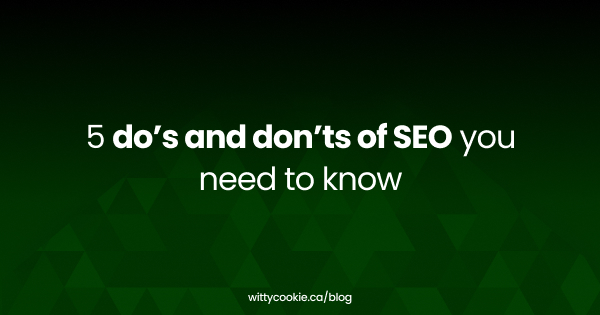6 SEO Trends you must know to kickstart your business
SEO is a moving focus on, and that means you need to stick to the top of the developments. These eight trends contain the secrets to improving your web existence in 2020.

Optimizing websites for SEO, mainly Google, has been a mixture of science and art always, what with the Google algorithm updates and technical advances distributed around internet users around the world. Gone are the days of simply stuffing keywords into content to rank on the SERPs. Today, search engines want you to EAT – that is, show your expertise, authority, and trustworthiness. This is why you need to develop your brand voice and connect with your users on a professional and personal level.
Here are six trends you can take advantage of to beat the competition in organic search and enhance your online presence.
1. Featured snippets
One of the goals of optimizing your website for search, aside from generating web traffic, is getting the top spot on the SERPs. However, a study by Ahrefs shows that even the top results are not safe from the power of the presented snippet. In fact, featured snippets consider clicks from sometimes the No away. 1-page result because they’re for some searchers enough.
There are several methods for you to improve the ranking of your articles, but to be chosen mainly because a featured snippet, you should know what the users want and present it to them. Here are some methods you can use:
Ask questions. Consider the keywords involved form instead of the keyword just. For example, rather than using “risk evaluation” as a keyword, make use of “exactly what is a risk evaluation?” This way, your content will answer a user question of just presenting generic content instead.
Have a look at popular Q&A portals. To see what a lot of people are asking about a specific subject, consult Q&A portals like Yahoo and Quora Answers. Type a question about your subject and these portals will present related queries that you may have never considered to ask.
Structure your articles. A straightforward tweak to your articles could be the difference between getting selected as a highlighted snippet and sinking to the depths of SERP oblivion. You will possibly not need to change your articles and messaging itself, but its structure: Consider using FAQs, bullet points or numbered lists, tables, how-to sections, and shorter paragraphs to increase the chances of your content being chosen as a featured snippet.
2. Visual image search
Image optimization has always been part of a sound SEO strategy, and Google has always advocated for it. The tech giant has made changes to how users search using images on the desktop, and you should be taking advantage of this feature. Images are integral to online searches, even showing up on the SERPs. When your images are featured on the SERP, it’s like being a visual featured snippet.
These are a few ways you can get your images featured on the SERPs:
Use high-resolution images.
Optimize picture descriptions and titles.
Add alternative text messages (alt-text) to all or any images.
Optimize image document and size types.
Insert image captions where required.
Use a unique image of stock images instead.
3. Google My Business
This may appear unnecessary once you are feeling you’ve made your existence online. Nevertheless, Google My Business can make your details instantly available to potential clients while also making your business more reputable online. Studies show that 88% of consumers who make local business searches on a mobile device either call or visit the business within 24 hours.
Claiming your company on Google My Business makes it easy for customers to find you online or offline. Here’s how you can claim your business and get it verified by Google My Business:
Create a Google account for your business.
Search for your business on Google and click on Maps. If your business doesn’t show up on the map, it was not added yet.
Go through the hamburger menu (the icon represented by 3 horizontal lines) left of the search bar and select “Put in a missing place.” Enter the details of your business, including its name, category, hours of operation, contact info, URL and opening day.
Click “Claim this business.” Google will add your organization to its listings almost immediately (give it up to 24 hours to display on the SERP). You’ll receive an email with a confirmation of your active business listing and a link to it. Verify your business either by phone or a postcard.
4. Editorial calendars
Editorial calendars, or content calendars, are important for every business because they help you plan out your content instead of just publishing whatever comes to mind. Planning your content is vital to strategize and optimize your website for the search engines.
An editorial calendar allows you to flesh out topic ideas, publish content material consistently, identify gaps in your articles, better collaborate together with your public media team and balance your content material topics. Below are a few ways to make your editorial calendar do the job (as well as your users):
Know your target clients. That one is self-explanatory – how can you know what to create unless you know who you’re composing for? Know which kind of articles you publish. A thorough articles audit of your released articles will give you a concept of what’s functioning and what isn’t. After an audit, revise your editorial calendar appropriately.
Determine your publishing regularity. While there is no hard-and-fast rule about how you should publish content often, your business and articles marketing goals can help you find the sweet place in your article’s strategy. Research, experiment, and tweak your editorial calendar until you find it. Remember that consistency is key in publishing content.
5. The native content material in social shares
Sharing your content on social media used to be enough to draw traffic to your website. These days, Facebook’s and most other social networks’ algorithms don’t play well with posts that take users away from their platform (e.g., to your site). Social media platforms want users to stay on them so long as possible, and external links are a hindrance to this objective. For this reason, most social media posts with links to external content material are buried in the feeds and forgotten, if seen at all.
Social media isn’t a shed cause in content material marketing, though. There is normally one way to make certain that your market sees your articles on their social mass media feeds: Add native articles to your social mass media posts.
Next time you post on social mass media, don’t simply put the title of your post and a web link to it. Add a little of native content, such as an overview of what’s talked about in your content or some compelling data factors. This gives value through primary engagement and content, which functions for both you and the public media platforms.
6. Spoken word
Podcasts are an oft-overlooked aspect of content marketing, but this is an excellent medium for those who are always on the go. Picture if users could digest your content while running, driving, night or lying during intercourse before they doze off for the. That’s where podcasts show the best potential.
It isn’t enough to just take up a podcast, though; you have to make it open to your target viewers. There are some solutions to make that happen:
Improve your podcast titles. Identical to optimizing for SEO, you should optimize your podcast for podcast-specific systems. iTunes and other podcast platforms depend on titles when ranking podcasts heavily, so you must make use of a descriptive, interesting name.
Recycle content. Take this content you have and change it right into a podcast already. This is a terrific way to leverage assets and improve your rating on the topics you desire.
Repurpose your podcast for YouTube. On an identical note, you can simply transform your podcasts into YouTube videos also, opening up your articles to more than 1 billion users. YouTube is a search engine in its own right and often part of the SERPs, so it should be part of your content marketing strategy.
These are just a few of the things that should be on your radar if you want to boost your business’s online presence. These tactics will not only get your brand name out there but also help your customers come to you. Make it a habit to revisit your SEO strategies periodically and make small tweaks whenever new information is available. Adaptability is key to stay static in the ever-changing SEO scenery afloat.



